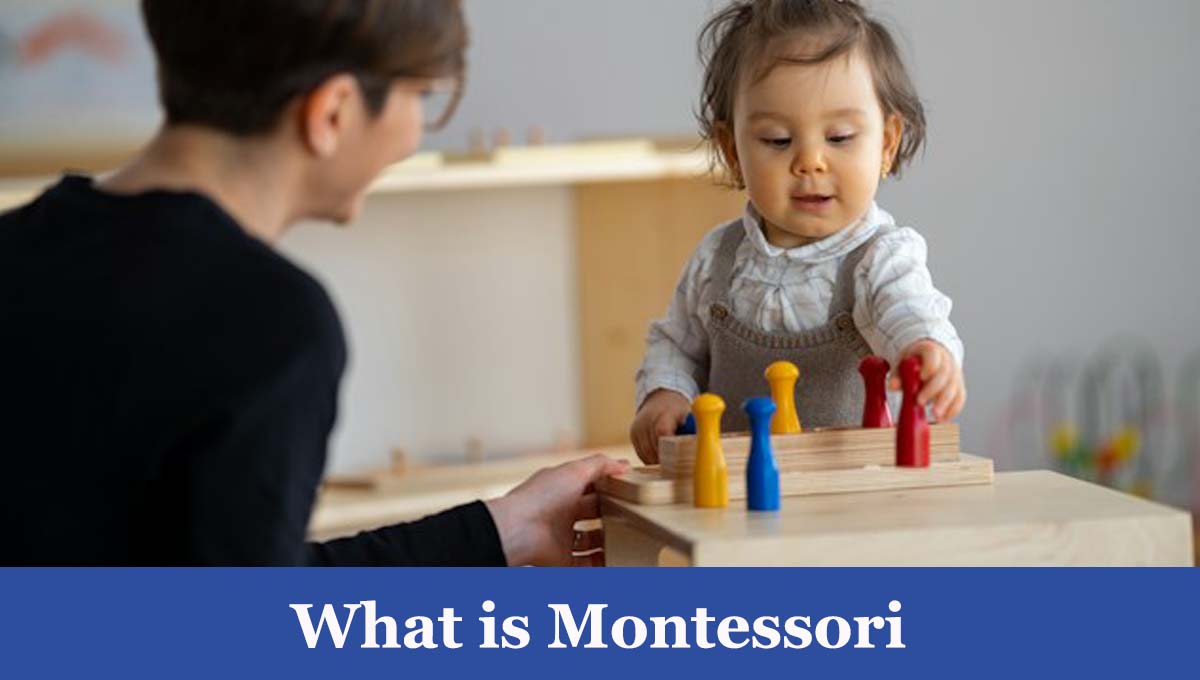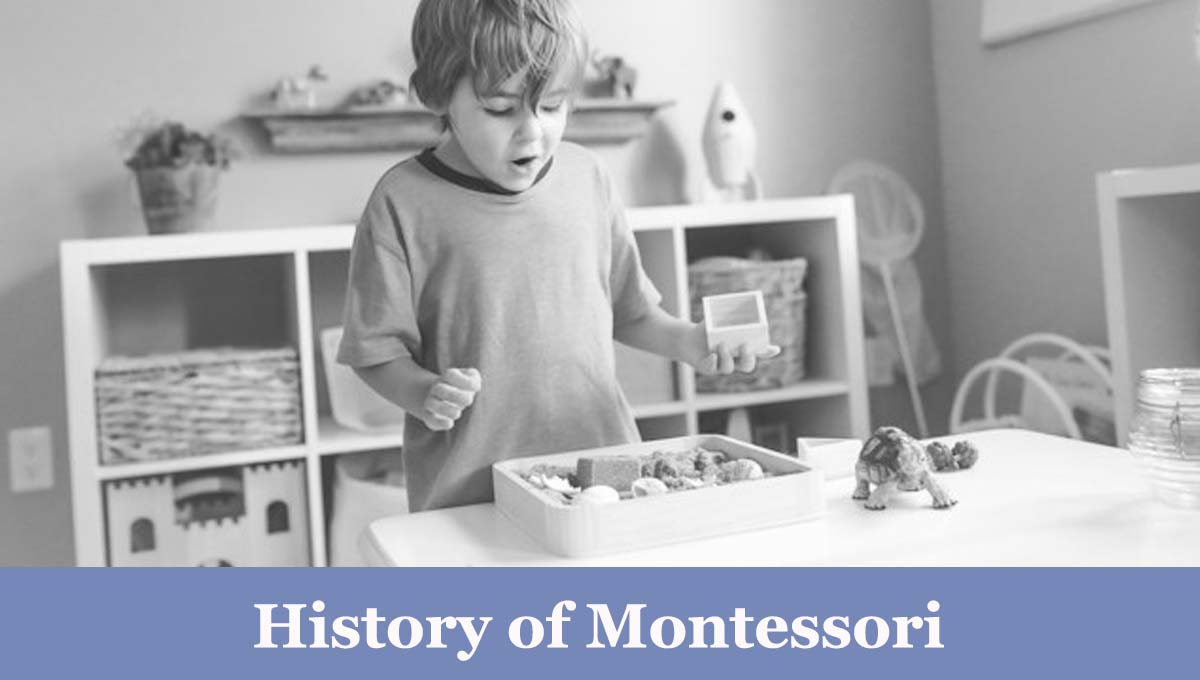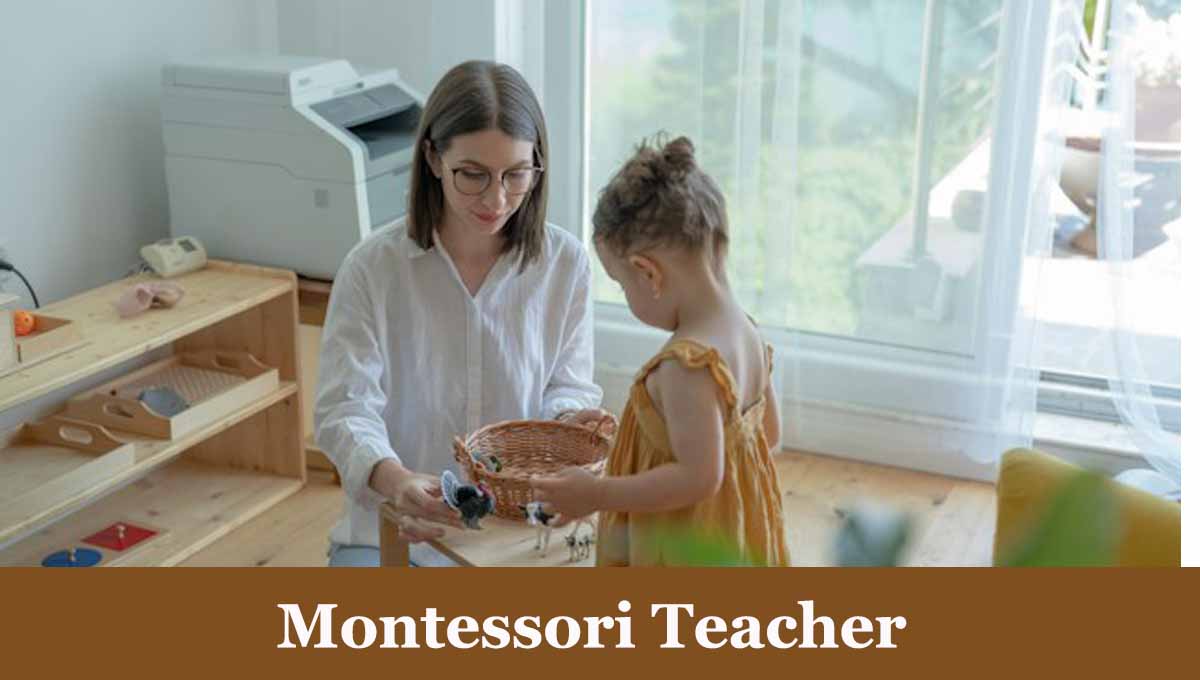What is Montessori
Whenever we talk about teaching and learning we hear a word “Montessori” in different terms like Montessori toys, Montessori materials or Montessori schools but what does actually “Montessori” means?
In fact, Montessori is a way of teaching and learning that focuses on letting children to explore and learn by their own speed. We know that passing examinations or getting degrees alone does not prepare us for life. But Montessori approach does prepare children for life. It lays a strong foundation by helping the children to help themselves. The environment is carefully designed to encourage independence and discovery.
Let’s discuss how “Montessori” was discovered?
History of Montessori
Dr. Maria Montessori is the founder of Montessori system of education. She emphasized the need of early year education. She was the first woman physician in Italy. As a physician, she specialized in pediatrics and the new field of psychiatry. Her approach was more scientific, rather than the familiar philosophical approach followed by many of the educational innovators who came before and after her.
She taught at the Orthophrenic school attached to the University of Rome formerly a municipal asylum for the “deficient and special children of the city and most of them are diagnosed as mentally disabled.
One day she inquired from a nurse about their awful condition, to which she replied that they fought for food and threw themselves on the floor to catch bread crumbs….that was they got dirty. Thus, they were kept in a prison like room with less food and no hopes of discovery. She and her colleagues started a wave of reform in the institution.
She discovered that her young patients needed purposeful activities, which could stimulate their senses and mind, and add into their self-esteem and the sense of achievement. Firstly, she dismissed the nurses and caretakers who treated those children with hatred and contempt. Secondly, she provided such environment which provoked their inner urges and planned age appropriate activities. Dr. Maria created a special place for kids that made them really curious and excited to learn. She planned activities that matched each child’s age and interests. This unique environment helped kids explore and figure things out on their own. It was not just about learning from books but also gaining important life skills. In this institute, the fun place and cool activities made kids love learning and growing, and they got to do it in their own way and time.”
With great enthusiasm, she dedicated herself to studying mentally disabled children. She almost startled the whole world when many of these mentally disabled children, after two years, were able to pass the standardized exams given by the Italian public schools. Gradually, the children also learned to perform most of the everyday tasks involved in preparing the meals and maintain the environment of the residential school.
She challenged that if she could attain such results with children who were disabled, school should be able to get dramatically better results with normal children.
She desired to implement her method on normal children. She started her first “Montessori House” of children named “Casa dei Bambini” in 1907 in Rome. It became famous in the entire world in a very short span of time. Her method was not perfect since day one. She improved it through trial and error. After nearly twenty two years of such experimentation she could say that she had found a method of helping children in their educational pursuits.This, lateron, came to be known as Montessori Method of education which is aimed at helping the child for life. She was also nominated for Nobel Peace Prize thrice she was called “Dr Maria Montessori”.
What is Montessori Philosophy?
The philosophy of Montessori is child-centered, focusing on understanding the natural patterns of development and the needs of growing children. This philosophy adapts to the child’s interests, serving as a guide to life that begins at birth and continues throughout the developmental journey. Learning is intended to occur at the pace and rhythm of the learner, not dictated by the teacher. Nature provides a specific framework for all developmental activities in a child, and adults must observe the child’s requirements at each stage of development. It is crucial for adults to ensure freedom and provide the right environment to help the child to achieve their goals, aligning with their psyche and genetic makeup. If the appropriate environment is provided, children will naturally learn what they need to without formal teaching, allowing them to set their own goals. Recognizing this principle teaches us modesty, patience, and respect for the child.
What is Montessori Classrooms Design
Dr Maria Montessori saying “The first aim of the prepared environment is, as far as it is possible, to render the growing child independent of the adult.”
I will discuss design of Montessori classroom by following headings:
- Number of Students in the Class
- Size of the Classroom Space
- Establishment a Self Sufficient Environment
- Approach to the Outdoor Environment
- Windows
- Children’s Garden
- Lighting
- Floors
Number of Students in the Class
The experts recommend an ideal size of 25 to 30 students at the early childhood and elementary levels, representing a three-year age range (traditionally ages 3 to 5, 6-9, 9-12, etc.). Naturally, circumstances such as room size, local regulations, or the challenges faced in the early years when a new class is being established may lead schools to set up classes with a smaller group size.
Size of the Classroom Space
Montessori allows minimum of 20 square feet per student at the early childhood, 30 square feet per student at the elementary level and 40 square feet per student at secondary level.
Establishment a Self Sufficient Environment
There should be a child sized kitchen, science lab, an art studio, and a classroom library. At least 2 individual bathrooms should be available in the classroom. A Montessori classroom is designed to give a homelike atmosphere to the children; therefore large institution like look should be avoided.
Approach to the Outdoor Environment
In a Montessori classroom at least two walls should be facing the outdoor environment which might open to view of a garden, fields or forests. One door which could open directly into the prepared outdoor environment should be there which could be used by the children at will.
Windows
Windows seem the great purpose of making use of sunlight at day time and are also natural source of ventilation. In a Montessori Classroom the windows should be large and attractive and should be built reaching till floor so that even very young children can look outside the windows with ease.
Children Garden
In the ideal situation there should be a garden area just beside the classroom where children can grow any vegetables, fruits, of their choice and go into the garden to work at their own choice where they can observe birds, and plants or simply work at will.
Lighting
Get many floor and table lamps o get a soft lighting effect (Avoid using florescent lights since they create a very bright and harsh look.)Soft lighting makes the room look like a children house.
Floors
Flooring should be decided such that a balance and harmony is maintained between the carpeted area and tiled flooring. Get certain area in the places where the child has to work with the material carpeted, and the area near to the sink and kitchen should be tiled.
This distribution further helps in control of error as well, which means if a glass jug falls on the floor it should break rather than bouncing (this makes the child learn that the glass break when it falls down.)Other than that modern wooden floor can also be used.
What is Montessori Learning Areas ?
There are five Learning areas in a Montessori Classroom.
- Learning Area of Practical Life Exercises
- Learning Area of Sensorial Exercises
- Learning Area of Language
- Learning Area of Mathematics
- Learning Area of Cultural Exercises
What isMontessori Teacher ?
The Montessori teacher role is quite different from the role played by teachers in traditional schools. They are generally not the center of attention, and they spend little time giving large group lessons. Their role centers on the preparation and organization of appropriate learning materials to meet the needs and interests of each child in the class.
Montessori teachers will normally be found working with one or two children at a time while presenting a new lesson or quietly observing the child at work. The focus is on children’s learning, not teachers teaching. Children are considered as distinct individuals in terms of their interests, progress and growth, and preferred learning style. The Montessori teacher is a guide, mentor and friend.
Conclusion
Montessori is a unique and holistic approach to learning that focuses on fostering independence, exploration, and the development of essential life skills in children. Founded by Dr. Maria Montessori, this method emphasizes a child-centered philosophy that adapts to the natural patterns of development. The carefully designed Montessori environment encourages self-discovery and independence, providing children with purposeful activities tailored to their age and interests.




